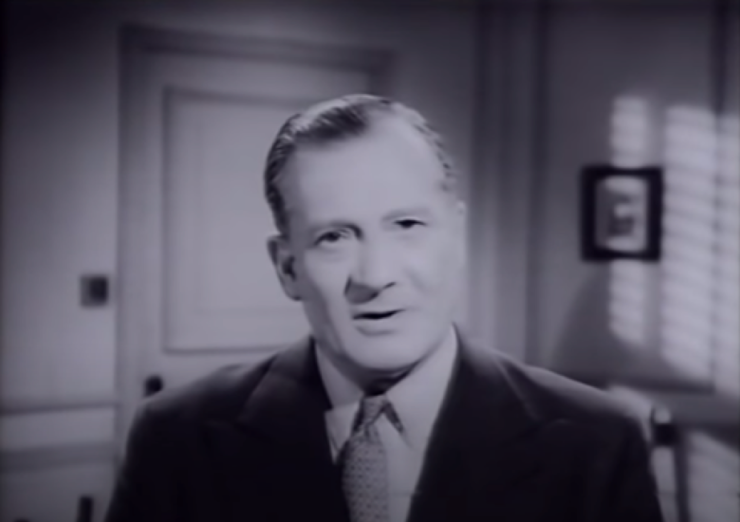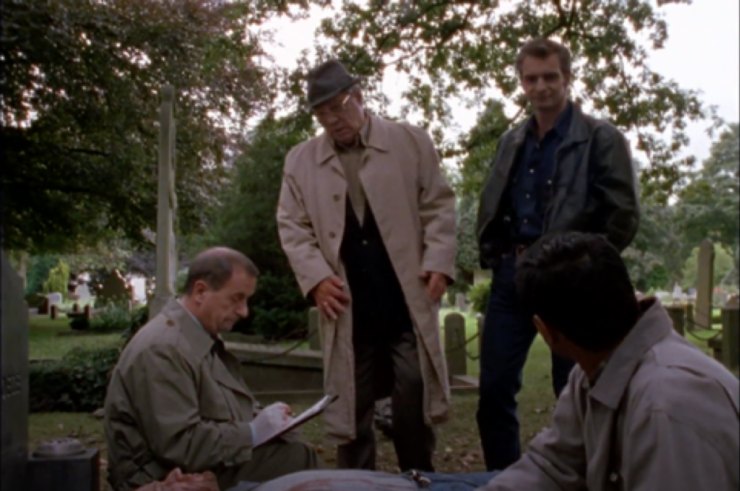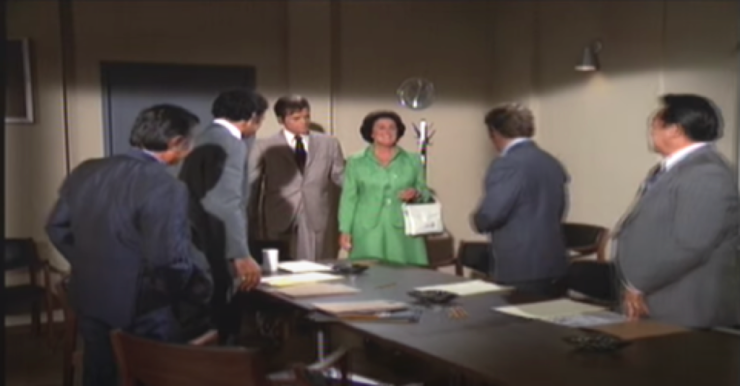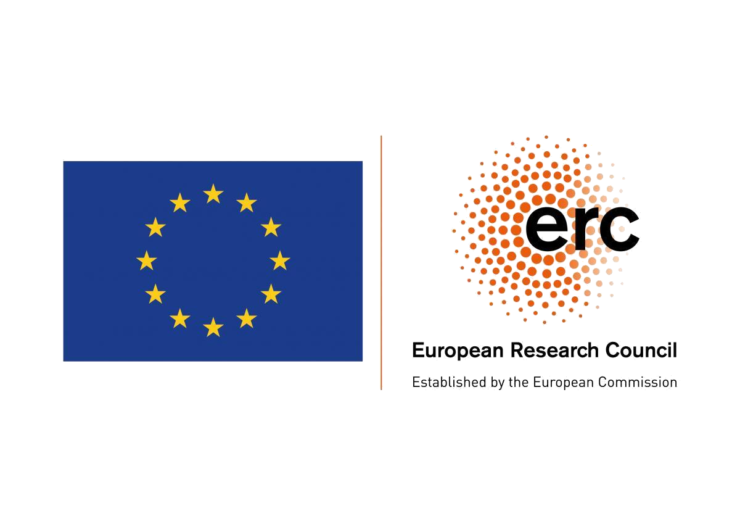Blog/Events
Talking about television: how forensic fiction inspires the FORCE team
In a team of historians of forensic science, there is bound to be at least one person who has consumed an outrageous amount of true crime and crime fiction. Fans of the wildly popular true crime comedy podcast ‘My Favorite Murder’ have named such people ‘murderinos’. In the FORCE team, it is clear that the resident murderino is PhD candidate Lara Bergers, who, when she is not listening to ‘Serial’ or watching ‘Hawaii Five-O,’ investigates twentieth-century Dutch forensics and policing practices. In a transparent effort to justify her excessive television, film and podcast consumption, she recently got together with colleague Pauline Dirven to organise a team meeting about the subject. In her PhD project, Pauline focuses on the embodied performances of British forensic experts in the twentieth century. Although she does not imbibe a lot of crime television in her free time, she, more than any other member of the FORCE research group, explicitly engages with fictional forensics in her research. Her experience in this area guided the discussion we had during January’s FORCE Forensic Fiction team-meeting. After what turned out to be a particularly fun and interesting meeting, the team decided that what was discussed ought to be shared with the world. This blogpost is the result.
Crime fiction and true crime are ubiquitous. The murderinos of the world have an apparently inexhaustible source of crime based entertainment at their fingertips — so long as their connection to the internet is uninterrupted. But while podcasts and streaming platforms are particularly ‘of our time’, the widespread interest in crime goes back to at least the late nineteenth century, when the murderinos of yore were collectively engrossed in the adventures of Sherlock Holmes. Its cultural prevalence has made crime fiction into a much-beloved subject for scores of scholars from different disciplines. Historians and their present-minded colleagues have studied crime fiction to analyse gender norms, crime myths, popular portrayals of victims and perpetrators and many other topics. But such studies, insightful as they often are, have little to do with the study of forensic science and are not, therefore, of particular interest to our research project.
Also disappointing, for our purposes, are studies of what has been termed ‘the CSI-effect’. This, often sociological, research analyses the impact of fictional portrayals of forensic science on real-world practices and especially on acquittal rates. It asks whether unrealistic fictional representations of forensic science — specifically since the airing of the CSI franchise (2000-2016) — influence the expectations and, consequently, the behaviour of jurors and other legal actors. This type of research would be difficult to carry out for historians, as historical records don’t reveal whether jury members were Doyle fans or Christi obsessives. Besides, merely asking how fiction influences reality implies too limited a view on the entanglements between forensic fact and fiction: one that asumes fiction is a mere representation of reality. On the contrary, as some scholars have already noted, forensic fiction has sometimes seemed to ‘pre-empt’ forensic reality. French criminalist Edmond Locard (1877–1966), for example, is known for his reflections on the intersection of detective fact and fiction, and his admission to having borrowed examination techniques from Sherlock Holmes. Moreover, fiction has been implicated in building public acceptance for specific technologies.
This complexity of the relationship between forensic fact and fiction is not only visible in scholarly theory but also a central aspect in many forensic television films and television. Often such shows explicitly engage with questions regarding their relationship with reality. Something that we noticed during our meeting is that early detective shows claimed to unveil what policing ‘was really like.’ Shows like the English show Fabian of the Yard (1954-1956) and the American Court of Last Resort(1957-1958) even introduced viewers to the real-world investigators that the shows’ characters were based on, in the form of a direct camera address at the end of the episode. In more recent years, too, there continue to be series that aim to show ‘what really happened’, while relying on story-telling devices that hail from the world of fiction. Of course, there are those familiar true crime documentaries that use re-enactments to increase the emotional tension in their stories. Additionally, some shows tell a fictionalised version of a true story; the ones that come with the disclaimer “Based on True Events”. A recent example of such a show is Unbelievable (2019), a harrowing miniseries based on a rape case that was covered in a ProPublica article, an episode of This American Life and the book A False Report.

Figure 1: The real detective Fabian demonstrates he is a better detective than public speaker in a stiff direct-to-camera address at the end of the episode “The executioner” (April 6, 1955)
We believe that these top-level observations about the relationship between forensic fact and fiction alone should inspire us to go beyond occasionally using phrases from Sherlock Holmes to spice up our writing and beyond mentioning forensic television shows in paragraphs aimed at indicating the timeliness and relevance of our research. Here’s what we propose: instead of asking how fiction influenced reality, let’s view these crime fictions as a part of reality. Not as something that reflects or influences an ‘actual’ forensic culture, where forensic culture would be defined as a lab or scientific culture, but as an integral part of it. Widening our understanding of forensic culture to include popular enactments of forensic practices might pave the way for historical research on forensic fictions. This could help historians understand how forensics were enacted in different social-cultural environments (for example, the laboratory, the morgue, the court, popular imagination and news media) and specifically how forensics became part of popular media culture. So what might we look out for when studying these forensic fictions as part of a forensic culture? In our team meeting, we covered three different themes.
First, we looked at the technologies we encountered in these series. We asked ourselves which technologies were shown to be instrumental to these criminal investigations and observed that it was not always what we expected. We noticed that in tv series from the 1950s, exemplified by Fabian of the Yard and The Court of Last Resort, science and technology are presented as key to solving crimes in the modern era. However, despite what is claimed in voice overs and monologues, most of the heavy lifting in these shows is done by ‘good old fashioned’ detective work. The technologies that do feature prominently are sometimes surprising. In one episode of The Court of Last Resort we are treated to a long poetic scene about the miraculous technology of the conference call. And in Citizen X (1995), an American film depicting the efforts of Soviet detectives to capture the serial killer Andrei Chikatilo, we see a forensic pathologist surrounded by the familiar tools of his profession — scalpels, saws, scissors etc — but most prominent in the scene is the microphone suspended from the ceiling and the tape recorder on which he records his notes. That is to say, when writing about forensic technologies, we often find ourselves focusing on fingerprints, bloodstain analysis, lie detection or DNA, but there are numerous non-forensic technologies that had a (potentially) enormous impact on forensic practices.
Another technology-related question we addressed in our meeting was whether the technologies we watched on screen were depicted as being 100% accurate or whether their application was shown to have limits. One of the issues that scholars who have studied the CSI effect have pointed to is that CSI tends to portray forensic technologies as the most prominent aspect of crime detection and as having almost infinite capabilities. But we saw something different when watching a scene from the pilot episode of CSI: Las Vegas (2000-2015). True, one of the chemists claimed that in twenty seconds a technology will give him a “complete chemical breakdown, right down to the atom”. But immediately after, he warns that “these mouth swabs don’t always read. Now vaginal swabs; no problem. Anal swabs… money!” Despite the tasteless joke, this does indicate that even in CSI technologies are acknowledged to have some limits – in this case, that mouth swabs provide less valuable information than anal swabs . We also found more explicit examples of this in other shows. In the British show The Expert (1968-1976), we see the titular expert use a technique that, he tells us, hasn’t been much used since the famous Ruxton case from the 1930s. He explains to his assistant that there are people who believe the technique not to be very reliable, but that in the particular case he is working on it may very well be useful.
Other questions would also be interesting to consider with regards to on-screen forensic technologies. For example, to what extent do the writers portray these instruments and experiments as independent means to research a conclusion and to what degree do they emphasise that scientists need to work with and interpret these techniques? Further, how did the emergence of new technologies influence these fictional enactments of forensics? And to what degree does reliance on technology imply a judgement about the limits of ‘good old-fashioned’ police work?
Experts and other actors
That leads us seamlessly into another theme that we discussed during our meeting. Who are the different people involved with forensics in these shows and who is most prominent? Police officers, pathologists, psychiatrists, scientists or perhaps judges and prosecutors? Has this changed throughout the twentieth century? It appears that in most cases, detectives are the central figures and we typically meet forensic experts through these detectives. Prosecutors and judges sometimes featured as important side-characters. We saw examples of that in episodes of Hawaii Five-O (1968-1980) and Hawaii Five-0 (2010-2020). We also saw it in Prime Suspect (1991-2006), the Dutch show Baantjer (1995-2006) and in the Law and Order franchise. There are, of course, exceptions to this rule. The Expert (1968-1976), it won’t surprise anyone to learn, centres a forensic expert.

Figure 3: Detective De Cock (spelled C-O-C-K) talks to a less-important character on the Baantjer episode “De Cock en de raadselmoord” (April 2, 1999).
More recently it seemed that the forensic expert (in many different guises) had truly arrived centre stage. Of course, there is the CSI franchise (2000-2016), which follows teams of crime scene investigators and which hardly acknowledges the existence of ‘ordinary’ detectives. There is also Bones (2005-2017), in which the titular Dr. Temperance “Bones” Brennan is a forensic anthropologist, and Dexter (2006-2013), about a forensic technician who specialises in bloodstain pattern analysis and who moonlights as a serial killer. Then there are shows that are more difficult to place like The Mentalist (2008-2015) and Castle(2009-2016) which focus on rather unusual consultants; a former — and fraudulent — ‘psychic’ and a detective novelist respectively. Mindhunter (2017-2019) and The Alienist (2018-2020) take a more serious look at psychological expertise in criminal investigations. The former concerns the (fictionalised) establishment of the FBI behavioural science unit and its form of criminal profiling, while the latter takes a stab at what criminal profiling might have looked like in late nineteenth-century New York.
It thus appears that there may have been a shift from the police detective as the main character to the forensic expert in the twenty-first century, but we would love to see this hypothesis tested by more extensive analysis. There are other questions to be considered as well. For example, are on-screen experts in any given period portrayed as solitary all-round experts or as highly-specialised members of a forensic team? Are they serious, humourless characters, or are they eccentric geniuses? What kind of epistemic and scholarly values do they embody? Answering such questions might tell us a lot about the problems forensic experts encountered and the status they had in specific times.
Norms and prejudices
A third theme we decided to look at during our meeting was the role of social-cultural norms and prejudice in forensic science. These forensic fictions offer an insight into the question of who is expected to be a forensic expert. Can it, for example, be a woman, a LGBT+ person, a person of colour or someone from a religious minority? The answer from the shows we have seen is a resounding yes. In Hawaii Five-O (1968-1980) we saw a female forensic psychologist assist the police by creating a profile for their killer. In the other Hawaii Five-0 (2010-2019) we met the eccentric Asian-American pathologist Dr. Max Bergman. In the Spanish show Turno de Oficio (1986-1987 and 1996-1997), we watched a forensic physician come out as gay to his colleague. The two medical examiners with most appearances on Law and Order: SVU are both women and one is black. Additionally, the show’s resident psychiatrist is both gay and Chinese-American. We believe it would be interesting to examine how these social-cultural identities influence how these on-screen experts do their jobs. While it is no doubt good that expertise is ascribed to a diverse group of characters, we do feel we have to note that these experts are typically relatively minor characters. The main characters are often white, male and straight.

Figure 4: A psychologist stands out in a bright green suit and a female body on the Hawaii Five-O episode “Draw Me a Killer” (September 18, 1973)
Beyond looking at the identities of the experts we see on screen, we can also study the way gender, race, religious and sexual prejudices influenced forensic practices in these shows. To what extent did rape myths or racist ideas impact the outcome of the research? Of course, there are shows that deal with this explicitly, offering a critique of the prejudices that so often impact real-world cases. We mentioned an example of this above, with Unbelievable (2019). Another example is the recently cancelled Brooklyn Nine-Nine (2013-2022) — a show that has been praised for its inclusiveness — which has explicitly tackled racial bias in policing in their 2017 episode “Moo Moo”. But perhaps more interesting are all the many ways that bias exists on the screen. Police procedurals have been roundly criticised for their normalisation of police impropriety and brutality, as well as for the racial and gendered dimensions of the offenders and victims they portray.
There are many relevant television shows and films that we have not mentioned — not to mention books, comics and radio plays — and plenty of themes and questions left unaddressed. But we hope that researchers who read this might be inspired to include forensic fictions in their analyses of forensic cultures. Forensic fiction is not only the purview of murderinos and literary and media scholars, nor should it be banished to some symbolic or representation realm. Instead, forensic fiction was and is part of a broader forensic culture that revolves around questions concerning epistemic virtues, the state-of-the-art in technologies, expert personae and the public image forensic expertise enjoyed in different contexts.
Pauline Dirven and Lara Bergers
Suggested literature
Adam, Alison, ‘Forensic Science and Forensic Fiction’, A History of Forensic Science (London, 2017).
Burney, Ian, and Neil Pemberton, Murder and the Making of the English CSI (Baltimore, 2016).
Cecil, D.K., ‘Dramatic portrayals of violent women: Female offenders on prime time crime
Dramas’, Journal of Criminal Justice and Popular Culture 14 (2007) 243–258.
Cole, Simon A. and Rachel Dioso-Villa, ‘Investigating the ‘CSI Effect’ Effect: Media and Litigation Crisis in Criminal Law’, Stanford Law Review 61:6 (2009) 1335-1373.
D’Cruze, Shani, ‘’The damned place was haunted’: The Gothic, Middlebrow Culture and Inter-War ‘Notable Trials’, Literature and History 15:1 (2006) 37-58.
Deborah Jermyn, ‘Body matters: Realism, Spectacle and the Corpse in CSI’, in: Michael Allen, Reading CSI: television under the microscope (New York, 2007) 79-89.
Horsley, Lee, Twentieth Century Crime Fiction (New York, 2005).
Littlefield, Melissa, ‘Historicizing CSI and its Effect(s): The Real and the Representational in American Scientific Detective Fiction and Print News Media, 1902–1935’, Crime Media Culture 7:2 (2011) 133 –148.
M’Charek, Amade, ‘Beyond Fact or Fiction: On the Materiality of Race in Practice’, Cultural Anthropology, 28:3 (2013) 420-442.
Mopas, Micheal, ‘Examining the “CSI effect” through an ANT lens’, Crime, Media, Culture 3:1 (2007) 110-117.
Plain, Gill, Crime fiction: Gender, Sexuality and the Body (Edinbrugh, 2001).
Shpayer-Makov, Haia, The Ascent of the Detective: Police Sleuths in Victorian and Edwardian England (Ebook, 2011).
Turow, Joseph, ‘’The answers are always in the body’: Forensic pathology in US crime Programmes’, The Lancet 364 (2004), 54–55.



